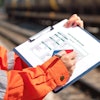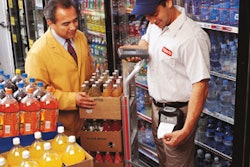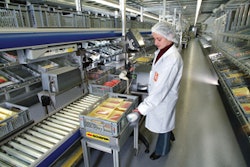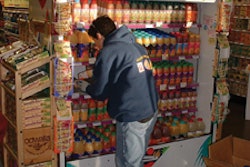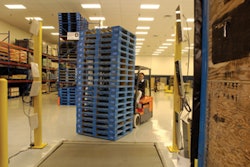Conventional wisdom is that the concept of a demand-driven supply chain is relatively modern. Part 1 and Part 2 of this lessons-from-history series looked at how in May 1940 the concepts of supply chain agility, just-in-time (JIT) manufacturing and zero inventories were introduced to offset a pending disaster for Britain's Royal Air Force with regard to the amount of fire power they had compared to Nazi Germany. This was done within an incredibly short timeframe to respond to the demands of a nation in crisis under the leadership of Lord Beaverbrook.
Part 3 looked at how Air Marshall Hugh Dowding initiated an integrated air defense system and the first of three components. This lesson-from-history article looks at the other two unique components, decision making and responding, to complete what became known as the "Dowding System" that helped turn the course of Battle of Britain.
"An adaptive system is a system that is able to adapt its behavior according to changes in its environment or in parts of the system itself. A human being, for instance, is certainly an adaptive system; so are organizations and families. Some man-made systems can be made adaptive as well; for instance, control systems utilize feedback loops in order to sense conditions in their environment and adapt accordingly. Robots incorporate many of these control systems. Neural Networks are a common type of algorithmic implementation of adaptive systems."
Source: Wikipedia, definition of an Adaptive system.
Dowding's Preparation for Battle
In May 1940, despite the lack of funding but because of his preparation and prudence, Dowding had made the right investments (Radar, Observer Corps, distributed hierarchy of stations) to create all the basic components of a complex but sophisticated sense-and-respond system. This could not come soon enough; despite Air Marshall Hugh Dowding's best efforts the RAF Fighter Command was facing a major challenge. With massive losses in the air battle over Flanders and France the remaining numbers of fighters would have to be carefully managed and deployed them in the forthcoming Battle.
By June 1940 an integrated air defense system was almost ready with Bentley Priory, the operational headquarters, at the center. Developed by Dowding, it had three unique components:
- Sensing — an early-warning system consisting of three lines.
- Decision Making — a real-time environment with tools like executive dashboards and real-time event models and processes for institutionalized decision making.
- Responding — a system feeding information to a hierarchy of Group/Sector operations centers beneath it capable of responding to the threat.
Decision Making
The filter room at Bentley Priory headquarters was the communications hub that aggregated all this disparate information collected from the early warning system. Occasionally there were other sources that passed new information to Bentley Priory, namely other operations centers and pilots. All this information was integrated in real time and passed directly into the operations room (see Figure 1).
Figure 1: RAF Operational Center (Courtesy of the Imperial War Museum, London)
The Bentley Priory operations room, in reality, was a sophisticated real-time event model with an elegant user-interface. Run by the Women of the Auxiliary Air Force (WAAFs), the purpose of the model was to visually map the skies above the United Kingdom. The map table was used to show the location of both friendly and enemy aircraft on a scaled map of the UK. The WAAFs would receive information from the filter room through headsets. Enemy planes taking off in France were tracked and plotted onto this real-time model, reflecting every change. The counters on the glass-covered table were color-coded:
- a red F on white background was for friendly aircraft,
- a black X on yellow meant unidentified, and
- a black H on yellow was for hostile (representing enemy formations) aircraft.
Every five minutes the WAAFs changed the color of all the enemy counters from yellow to red and then to blue. These colors corresponded to the operations room's clock, which was also color coded (yellow, red and blue) in five-minute increments. This provided a real-time snapshot of a raid in progress and its evolution.
Figure 2: Map Table with Colored Counters Representing Aircraft
When two stations gave the positions of the same aircraft, greater reliance was placed on the accuracy. A colored arrow for each raid was changed as new reports were received. All the information on the table was no older than 15 minutes as the situation was continuously updated. As a result, the model provided a snapshot of real-time events, and this gave the decision-makers the information they needed to manage the movement of their fighters. They could position and group these fighters at the required operational heights to be most effective, which would prove to become a significant advantage.
Responding
This information was then disseminated through the complete command structure, which divided the country into six groups (9, 10, 11, 12, 13, 14), based geographically (see Figure 3). Each group had a station and commanding air officer and was further divided into sectors (between 5 to 10) with stations (headquarters), and surrounding, smaller fighter stations/airfields.
Figure 3: RAF Fighter Command hierarchy supporting Bentley Priory
Within the individual group and sector operations centers there were many of the characteristics of Bentley Priory, specifically with the event-tracking and decision-making environment. Bentley Priory, at the center, saw the overall picture of events, whereas group levels saw only what pertained to them. The sector operations centers made up the front line and were expected to have the most activity (see Figure 4).
Figure 4: RAF Fighter Command hierarchy supporting Bentley Priory
The group operations centers could then respond through a second user-interface model: the Tote board. Named after the horse-racing tracks' "Totalisator" board, it had dozens of electric lights that ran the full length of a wall. These indicated the status of squadrons, whether they were in contact with the enemy or disengaging to refuel and rearm on the ground. It also indicated the operational state of readiness of squadrons held in reserve that were "available" in 30 minutes, at "readiness" in five minutes, or at "cockpit readiness" in two minutes to engage in immediate battle. This provided the decision-makers within the elevated gantry (see Figure 1) a means to track the incoming raid and then respond through the tote model. They could determine what resources were available and how they could be deployed. The sector-level operations centers made the final decision, which went out to the individual squadrons and pilots. The operations centers were also linked by telephone to the following commands (see Figure 5) that responded to incoming raids:
- The primary role of the anti-aircraft command, under the army, was to protect the aircraft manufacturing industry and support fighter command. It was divided nationally into seven divisions, but linked to fighter command groups. Anti-aircraft fire was more effective in daylight than at night, as the incoming bomber streams were in closer formations. At night, the aircraft were very widely spaced, with a 1:50 chance of a hit.
- Closely linked to the anti-aircraft command were the searchlight units, which cooperated with each other. Both had to be well aligned to the operational centers, aware of aircraft positions and movement in the skies to avoid firing on friendly fighters by mistake.
- The barrage balloon command operated 52 squadrons across the UK, creating a barrage of large balloons that protected towns and cities, as well as strategic targets like industrial areas and ports. Strung by heavy cables they protected everything at ground level from the threat of low-flying dive-bombers. Set at heights of up to 5,000 feet, they would force aircraft to fly high, limiting their accuracy and bringing them within range of the anti-aircraft guns.
- Closely linked to Bentley Priory were the operational training units that were responsible for pilot training. These units had to be aware of pilot losses, as the number of available pilots was a continual problem for Dowding. Pilot training took three months and was limited to pilots under 30. Dowding brought Allied pilots into the RAF squadrons, as well as volunteers from the Commonwealth and countries under Axis occupation.
- Air-sea rescue operations were directed to downed RAF pilots. Pilots were brought back to squadrons quickly and could be back in the air on the same day.
- Part of the Fighter Supply Chain and under the management of Beaverbrook at the Ministry of Aircraft Production (MAP), the Civilian Repair Operation (CRO) was an important recovery operation. MAP had a very tight relationship with group operations that were in contact with their pilots and knew their positions in the battle, so they could plot the location of downed fighters very quickly.
Figure 5: The inputs/outputs to Bentley Priory
The whole operation, because of the flow of information, could readily track downed pilots and aircraft. The operation could also track and relate wastage by squadron and therefore direct the supply chain to re-supply where needed. Dowding, through Ultra, generally had a relatively good idea in advance of where the targets were. Dowding could use this information to give Beaverbrook a forecast to where likely supply would be needed.
Summary
In today's world, what can we take away from this lesson-from-history? Dowding's use of real-time event models, and institutionalized decision-making, known as the "Dowding System," or Adaptive System, helped turn the course of Battle of Britain. It was able to very accurately follow the battle and track fighter wastage. As a result, it directed Beaverbrook's organization (See Part 1 and Part 2) to the recovery of aircraft through the Civilian Repair Operation and to respond to its needs and supply fighters literally "on demand." It was the first time where information was used on such an industrial scale.



